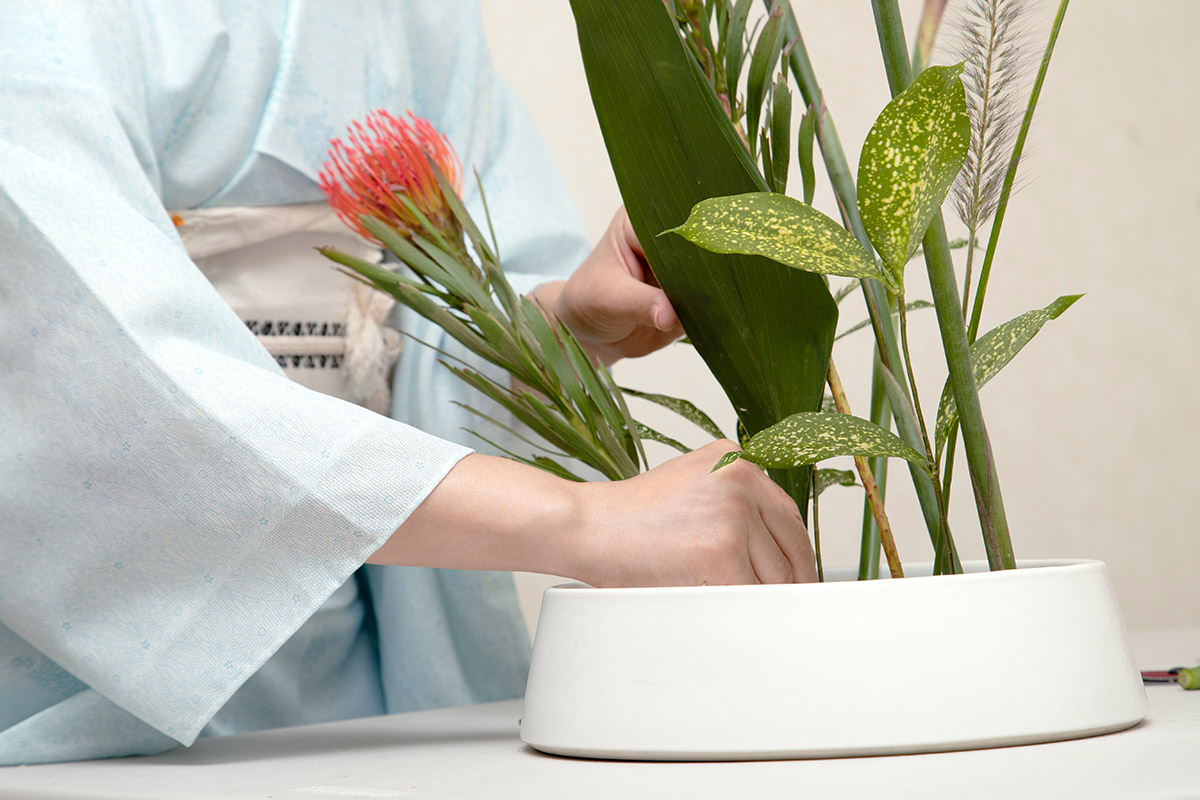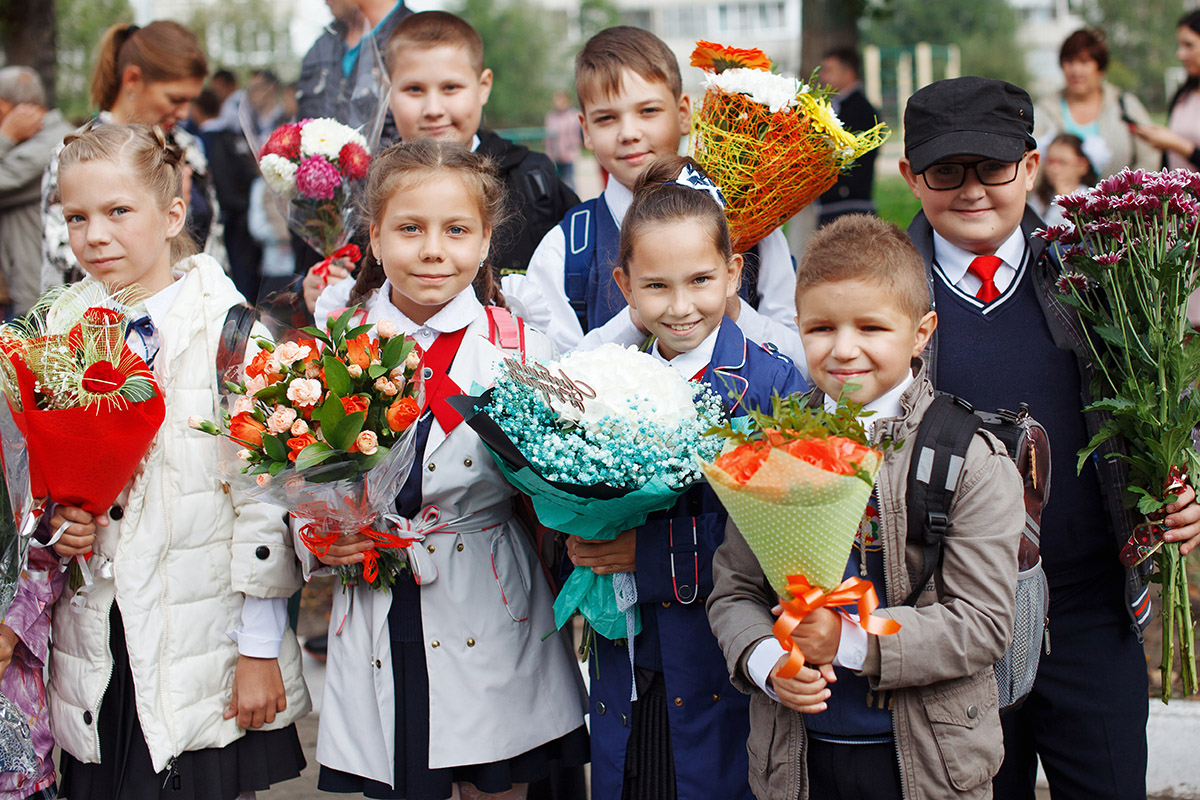The History of Gifting Flowers
Take a trip around the world — and through time — and find out how this tradition started and what it means.
Oct 24, 2022

Of all nature's splendor — from its fascinating animals and birds to its breathtaking sunset vistas and colorful life on the ocean floor — few elements are as immediate, personal, and accessible as flowers. From sight and smell to texture and, in some cases, even taste, flowers deliver an all-natural sensory experience like nothing else. And with more than 400,000 known species of flowering plants, it's no surprise humans have been gathering, studying, and gifting flowers to one another for centuries.
The practice of giving flowers as a gift is a way "for us to speak when there are no words to convey an emotion," says Jackie Lacey, a floral designer and director of education at the Floriology Institute in Jacksonville, Florida. The exact messages suggested by specific floral gifts can differ widely from one culture to the next, however, so to enhance your next flower giving experience — and to avoid any miscommunication — we asked Lacey to help explain the history of the silent power of gifting flowers.
Greece
Man's fascination with flowers can be traced back to the spiritual traditions of the ancient Greeks, who Lacey says "used flowers as props for storytelling…[in a] mythology which is full of references to certain flowers being representative of certain gods and goddesses." Despite this reverence for flowers as signs of the highest of deities, the greatest philosophers of the era also spoke of the blooming and wilting process of every flower as a direct and ever-present reminder from the gods about the briefness of all human lives.
Egypt
Ancient Egyptians also considered flowers holy, placing them in the tombs of the pharaohs as gifts thought to ward off evil spirits and using them in festivals like the extended 11-day "Beautiful Festival of Opet," which honored the Nile River's powers of fertility. This celebration saw intricate floral jewelry crafted for the ruling class and towering flower arrangements, featuring the nation's treasured blue lotus, carried on ceremonial altars along a processional path that featured hanging rose, poppy, and lily garlands.
Japan
Further east, the tradition of constructing floral shrines was resurrected in Japan during the Asuka period, an era of great artistic, political, and social change. Here, however, it took the form of an anytime, any-class national art known as kado, or "way of the flowers."

"As far back as the 7th century, when floral altars were created, the art [of kado] has been a way of life," Lacey explains. "This was more of a male discipline historically, but all can practice it in today's society."
In modern-day Japan, kado pieces are especially popular housewarming gifts, as well as a commonly used means of raising the spirits of the sick (though never given potted, lest the recipient's illness take deeper root). Even the simplest of events, such as coming home from vacation, are kado-worthy: The Japanese tradition of gifting souvenirs to friends and family, known as "omiyage," often involves regional flowers in kado arrangements.
France
One of the earliest practices of assigning specific meanings to certain flowers started when French royal forces traveled through Turkey in the mid-1500s. Upon returning home from his trek, a high-ranking knight named Louis Girard presented a single lily of the valley to King Charles IX, who described the flower as a Turkish good-luck token and sign of spring's return. King Charles took such a liking to the flower that he gifted a full bouquet to every lady in the royal court, launching a holiday that eventually became known as La Fête du Muguet ("celebration of lily of the valley").
Over the following century, the tradition spread from the monarchy down to the peasantry, and to this day, every May 1 in France sees flower vendors traversing the streets selling lilies of the valley to passersby of all classes — at tax-free prices, as commanded by the government! Legend has it that any who purchase or receive a lily with 13 blossoms on this day are in for some serious prosperity during the coming season.
England
In Victorian-era England (1837-1901), a society that demanded its citizens maintain airs of constant calm and composure, flower gifting evolved into a means of expressing especially strong emotions that could be considered uncomfortable, or a breach of etiquette, to be spoken aloud. To further this purpose, its citizenry developed floriography, an art of speaking with flowers, including detailed dictionaries explaining specific meanings behind the species, colors, arrangements, and numbers of flowers given to a recipient.
Floriography became an especially useful means of communication between those of different social classes and personal identities. "Many flowers took on special meaning and transferred 'unspoken' messages during the time of Oscar Wilde, in 1890s London, [including] the earliest symbols of the LGBT community," Lacey says. "One of the earliest is the green carnation, worn on the lapel by a man to signify to others they were 'open to same-sex liaisons.'"
Russia

The language of floriography also exists in Russia, as adopted from western European nations. One uniquely Russian tradition sees flowers of brighter hues as representative of a feeling's intensity; for example, in romantic circumstances, white roses would be given as a first-date gift, pink roses as appropriate for early-relationship stages, and deep red roses reserved for head-over-heels love. One exclusion is flowers of any yellow hue, as these have come to represent lies, sadness, and a hint that a break-up is approaching (as explained in the famous Russian pop song "Yellow Tulips").
Beyond all the classic reasons and occasions for gifting (to mourners, the sick, as signs of romance, for birthdays and academic accomplishments), flower gifting in Russia absolutely must occur on specific national holidays, such as Teachers' Day, Knowledge Day, and Women's Day (red carnations, symbolic of official national holidays, are always to be reserved for days like these). Regardless of the occasion, plants rooted in pots, rather than cut flowers, are considered the proper gift for elderly women, as signs of extended life.
China
Nearly all the Chinese culture's earliest poems, proverbs, and artworks utilize flowers known as "The Four Gentleman" — orchid, plum blossom, bamboo, and chrysanthemum — to represent the characteristics of uprightness, purity, humility, and perseverance. Though chrysanthemums are still highly revered, and have come to represent honorable life, Mandarin tradition dictates that gifting chrysanthemums to a tutor is an inappropriate, and even intentionally insulting, act. In such a situation, substituting "sunflowers and carnations, which can show love and respect to a teacher," is the way to go, Lacey recommends.
Chinese tradition also considers flower gifting as a means to produce real-life results. The culture believes, according to Lacey, that "peonies or dahlias for elders can foster good fortune, and bamboo can send a friend financial success." Tangible medical reasons for gifting exist as well: Flowers like the Japanese honeysuckle and pagoda flower are historically gifted by loved ones as herbal remedies for the flu and circulatory system ailments.
Spain
Gifting flowers in Spain is seen as a serious move, and, according to Lacey, presents with petals "should be sent specifically, and for special occasions only." In addition to weddings, funerals, and major holidays, flowers can be sent as an appreciation of hospitality, he notes, adding "potted plants are often sent after dinner parties but never chrysanthemums, red roses, dahlias, and white lilies, as these flowers suggest death." The safest bets include lilies and Spanish bluebells — both considered free of great emotional meaning — but remember to count your stems: Spanish tradition has it that flowers should be given only in odd numbers (except for the unlucky 13), as even-numbered bouquets are to be saved as funeral gifts.
Australia
While Father's Day in the U.S. typically sees more tools gifted than blooms, Australian dads have been receiving flowers on their special day since the continent's early Aboriginal era, when a father's base responsibility was teaching survival skills to his children. In the wild Outback, this could become a fierce task, so, in recognition of their bravery, flowers were seen as a gentle gift of gratitude from children whose innocence a father sought to protect.

Australia's appreciation of flowers has continued to blossom throughout its colonial era, and is displayed in full during the annual Melbourne International Flower and Garden Show — the largest such festival in all the Southern Hemisphere — which last year drew more 100,000 visitors.
Germany
As in Spain, the number of flowers gifted to a German is just as important as the flowers' freshness, and for the same reasons. (Beyond superstition, floral traditions in some central European areas, including Germany, insist that odd numbers of flowers are easier to arrange. This claim is based on the fact that many popular blooms grow only an uneven number of petals.)
Unlike Spaniards, however, Germans insist on a greater level of generosity: Simply being invited to a home merits both a bottle of wine for the host and flowers for his or her partner. In such a circumstance, tea roses and yellow roses are favorites (save the reds — they're suggestive of deep romance, as in America), which, like all floral gifts in Germany, should be unwrapped from any bouquet housing before being handed to a recipient.








